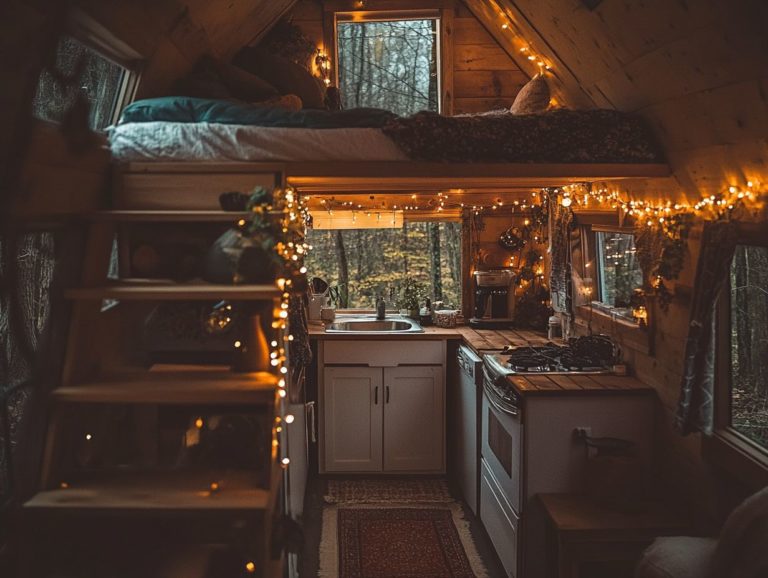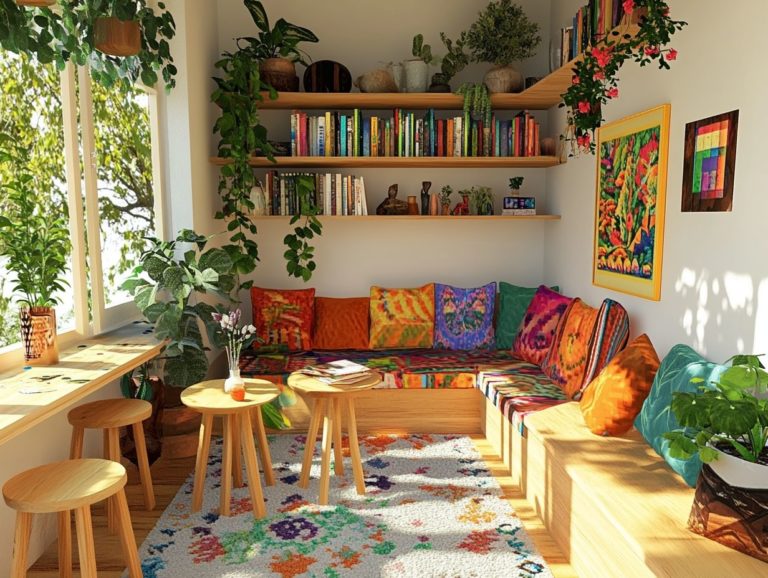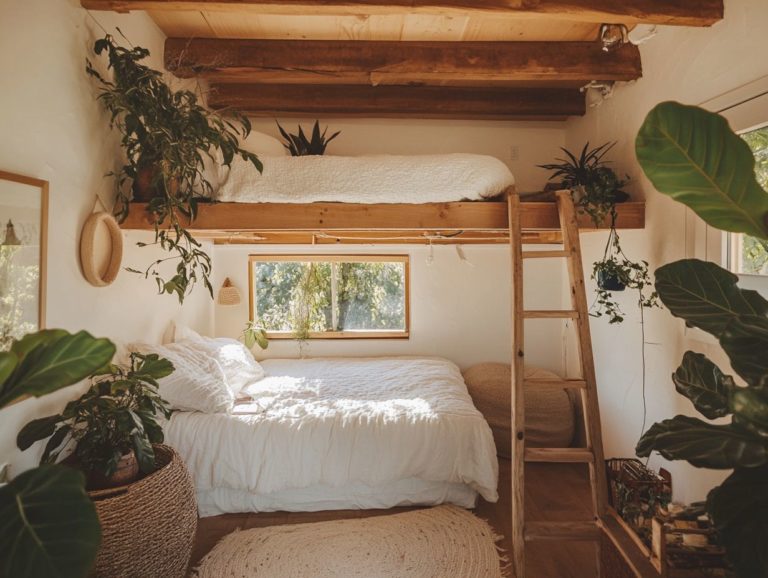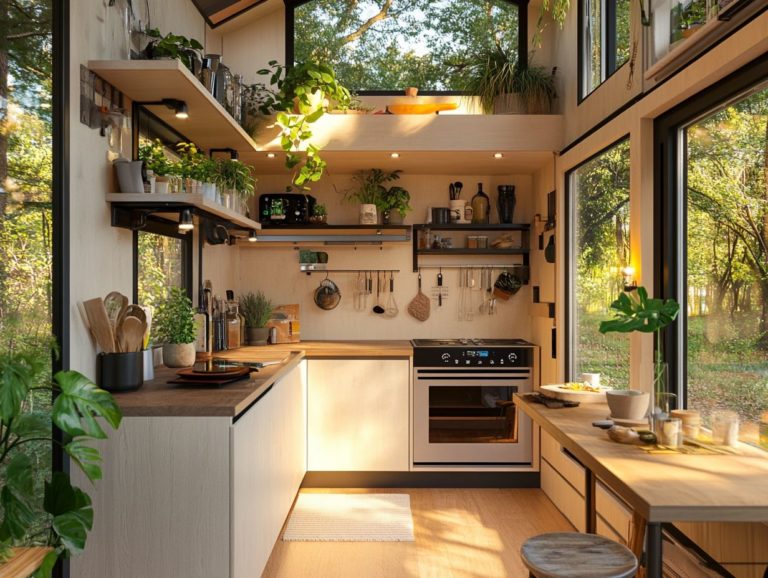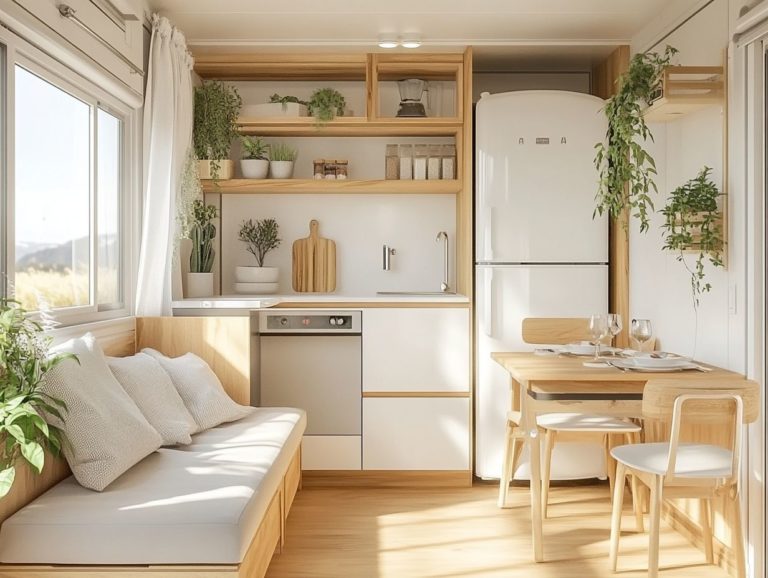How to Design a Tiny House Mudroom Yourself
In the realm of tiny house living, every square inch is precious. The mudroom is an important part of your home that can inspire creative ideas.
Often overlooked, this entryway has the power to enhance functionality, organization, and aesthetics in your compact home. Whether you’re stepping in from a rainy day or returning from an errand, a thoughtfully designed mudroom sets the perfect tone for your tiny abode.
This article explores the importance of mudrooms in tiny houses, highlighting key design factors and offering creative ideas along with DIY steps to help you create your ideal space.
Get ready to transform your entrance into an amazing functional haven!
Contents [hide]
- Key Takeaways:
- What is a Mudroom and Why is it Important in a Tiny House?
- Factors to Consider When Designing a Tiny House Mudroom
- Design Ideas for Tiny House Mudrooms
- DIY Steps for Creating a Tiny House Mudroom
- Maintenance and Upkeep of Tiny House Mudrooms
- Frequently Asked Questions
- 1. Can I design a mudroom in my tiny house myself?
- 2. What are some important considerations when designing a tiny house mudroom?
- 3. How can I optimize space in my tiny house mudroom?
- 4. Do I need to have a separate room for a mudroom in my tiny house?
- 5. What are some design ideas for a small mudroom in a tiny house?
- 6. How can I add a pop of color or style to my tiny house mudroom?
Key Takeaways:
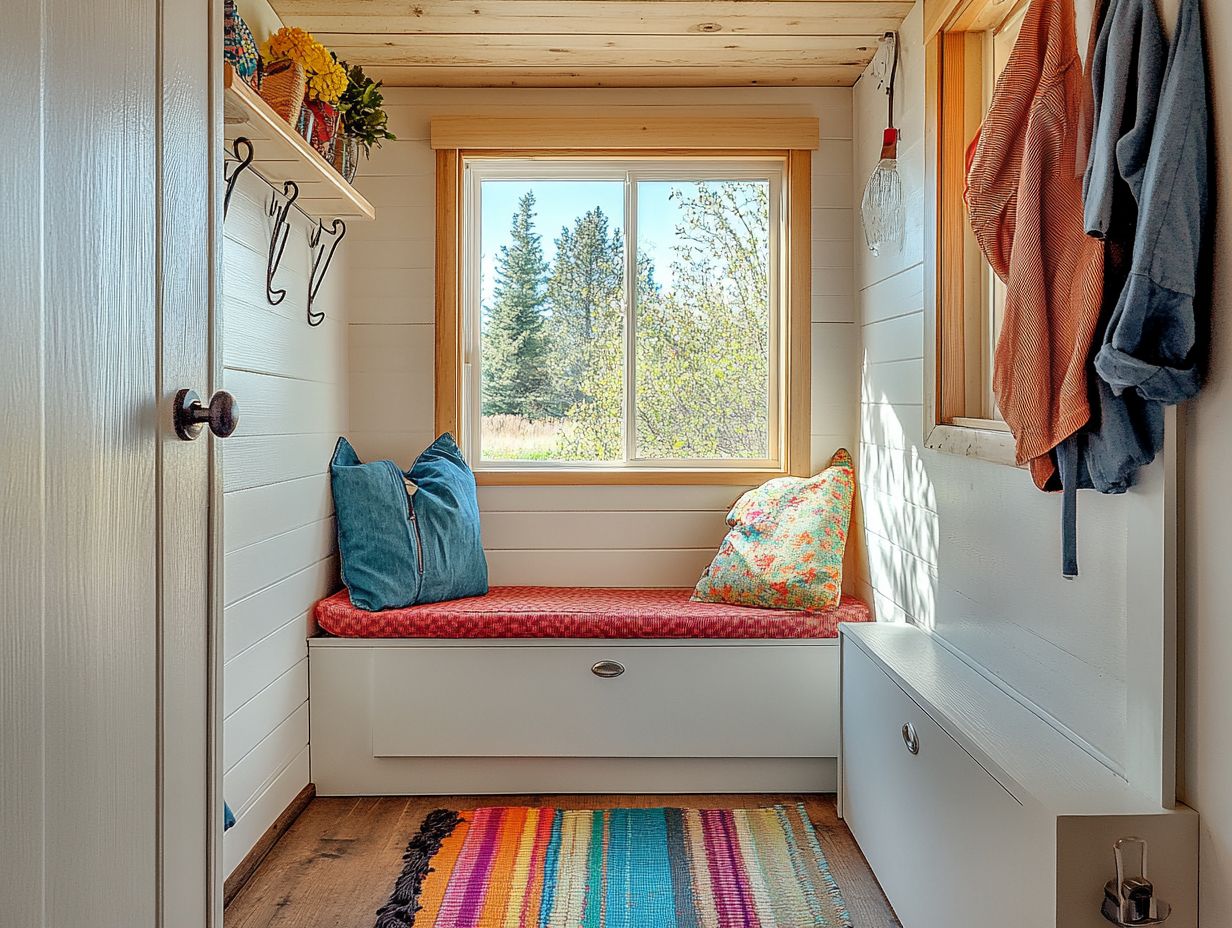
- Utilize every inch of available space and prioritize functionality when designing a tiny house mudroom.
- Consider the climate and weather in your area when choosing materials and features for your mudroom.
- DIY your own mudroom with a step-by-step guide and regular maintenance to keep it clean and functional.
What is a Mudroom and Why is it Important in a Tiny House?
A mudroom is an important part of a tiny house, acting as the transition area between the outside world and your serene interior. It helps keep your home organized and functional.
In a compact living space, where every inch is precious, a thoughtfully designed mudroom makes life easier by allowing family members to effortlessly store their belongings and manage footwear and outerwear.
With careful planning, this space can transform into a warm and inviting entryway that beautifully reflects the cozy charm of tiny house living.
Factors to Consider When Designing a Tiny House Mudroom
When designing your tiny house mudroom, several key factors are essential to ensure the space is both practical and visually appealing. The limited square footage of tiny houses calls for a thoughtful approach that maximizes every inch while offering effective storage solutions.
Key considerations include the layout, climate-related features, and your household’s specific needs. These elements will shape a mudroom that fulfills its purpose and reflects your unique style.
Available Space and Functionality
The space available in your tiny house significantly impacts the functionality of your mudroom. It is essential to optimize every inch for effective organization.
Your design should feature practical storage solutions like custom mudroom benches, shelving, and overhead storage, ensuring each family member can keep their belongings neatly organized.
This focus on functionality elevates the usability of the mudroom and fosters a more serene and inviting home environment.
Using closet organization techniques can transform your mudroom into a clutter-free sanctuary, maximizing vertical space with thoughtfully crafted shelving solutions.
Consider adding hooks or pegs for hanging coats and bags, which can free up valuable floor space while providing easy access.
Incorporating baskets or bins on shelves creates designated spots for shoes and smaller items, ensuring nothing is scattered about.
Using modular furniture provides flexible seating options that double as storage. Transparent containers make locating items a breeze no more rummaging through piles.
By implementing these strategies, your tiny house s mudroom can be both stylish and efficient, reflecting your discerning taste while maximizing functionality.
Climate and Weather Considerations
When designing your tiny house mudroom, climate and weather considerations are absolutely crucial. They directly influence both functionality and comfort throughout the year.
Depending on where you live, you’ll want to integrate features like durable flooring and effective insulation into your design. This way, your mudroom can remain a welcoming space, even amidst harsh weather conditions. By tailoring the design to address these environmental factors, you can elevate both the beauty and practicality of your tiny living space.
If you live in a warmer climate, tile installation is ideal due to its coolness and ease of cleaning. Conversely, if you are in a colder region, selecting materials that keep heat in becomes essential to retain warmth.
Paint samples can showcase bright, airy hues to create an inviting atmosphere, but ensure they re also resistant to moisture if humidity is high. The choice of light fixtures is equally important; natural light can foster a cheerful ambiance, while well-placed artificial lighting will ensure safety and visibility during the darker months.
Each of these considerations enhances aesthetics and guarantees your mudroom functions effectively, regardless of the season.
Design Ideas for Tiny House Mudrooms
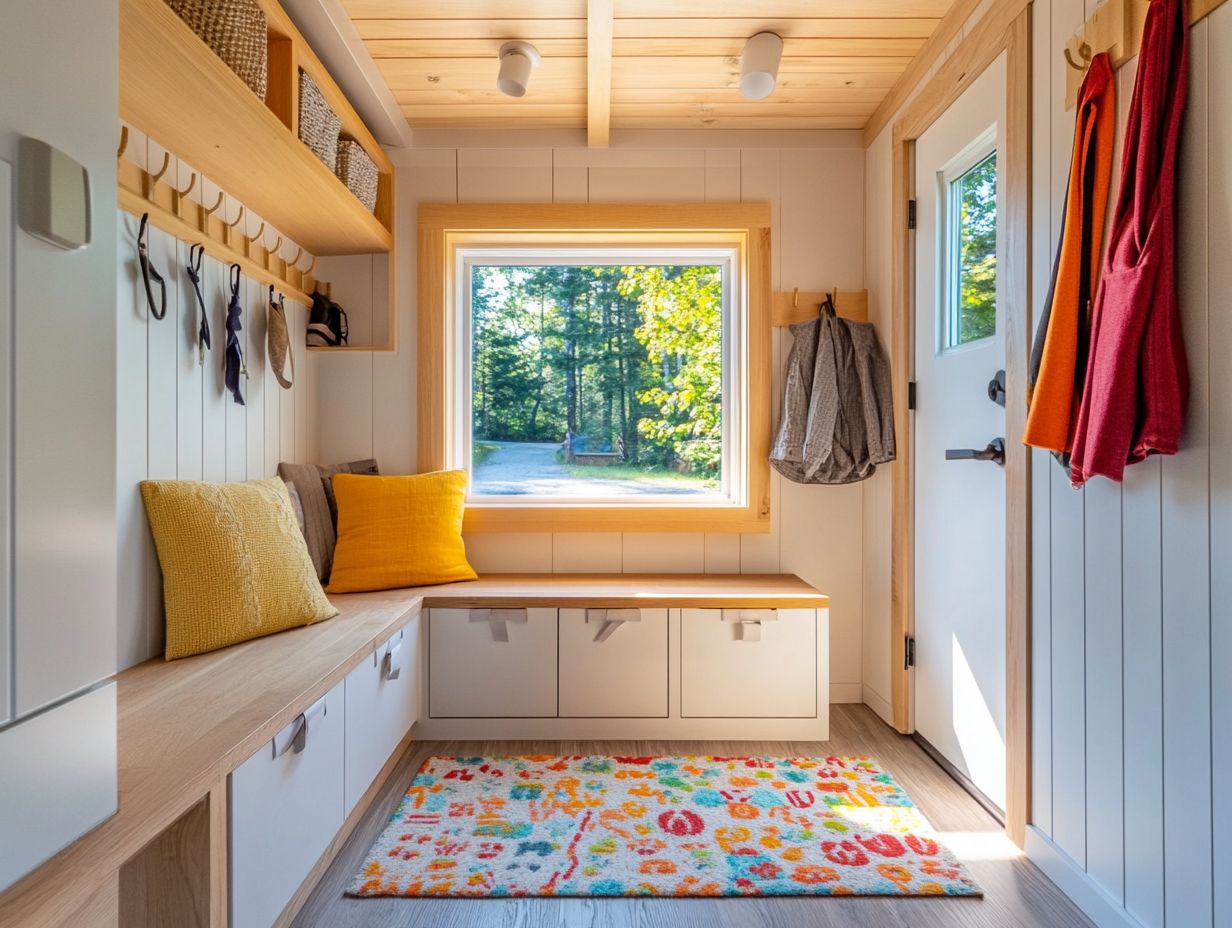
Exploring innovative design ideas for tiny house mudrooms allows you to transform these essential spaces into effective hubs of organization and style. It’s all about maximizing both storage and functionality.
With options ranging from repurposed materials to custom furniture solutions, a wealth of creative approaches awaits you. These ideas can enhance both storage capabilities and aesthetic appeal.
Focus on multi-functional design elements and clever organization techniques to craft a mudroom that fulfills your practical needs while beautifully reflecting your personal taste.
Maximizing Storage and Organization
Maximizing storage and organization in your tiny house mudroom is crucial for maintaining a clean and functional environment. By implementing innovative storage solutions like shelving systems, peg racks, and storage baskets, you can effectively organize your belongings while minimizing clutter.
With clever design choices and DIY projects, even the smallest mudroom can provide ample storage options tailored to your unique needs.
To enhance your mudroom storage, consider incorporating vertical shelves that utilize wall space. This provides easy access to frequently used items and frees up valuable floor space. Using labeled bins for different activities like gardening or sports helps keep your closet organized, ensuring everything has its designated spot. Sliding baskets under benches keep your shoes and everyday gear accessible yet neatly tucked away.
Thoughtfully planned storage solutions that combine functionality and aesthetics can transform your space into a welcoming entryway that truly reflects your lifestyle.
Multi-functional Use of Space
Creating a multi-functional space within your tiny house mudroom significantly enhances its utility. It seamlessly blends storage, organization, and even social interaction. Design areas for various purposes like a cozy seating nook for family photos or a functional workspace for DIY projects to optimize your mudroom for multiple needs.
This versatility fosters better organization and contributes to a warm, inviting atmosphere throughout your home.
Custom furniture plays a crucial role in achieving this dynamic design. Imagine integrated shelves, benches with hidden compartments, or foldable desks that conserve precious space. Consider adding hooks for outdoor gear right next to a dedicated area for crafting supplies, transforming your mudroom into a hub for both creativity and efficiency.
Amending the layout with thoughtful home organization techniques like labeled bins and modular storage units promotes easy access and tidiness, ensuring your mudroom remains both functional and visually appealing.
DIY Steps for Creating a Tiny House Mudroom
Embarking on a DIY project to create a tiny house mudroom is an exciting chance to create something special! Imagine the satisfaction of personalizing every detail to suit your needs and preferences.
Choosing the right materials and simple construction methods is key. With your skills and creativity, you can make a unique and functional entryway that keeps you organized and enhances your tiny home’s look.
Gathering Materials and Tools
Gathering the right materials and tools is the first step in your DIY journey. Focus on sourcing quality supplies like plywood, construction adhesive, and tools like a table saw.
Consider additional features like tile flooring, which can significantly boost both the look and functionality of your mudroom. Quality tiles are easy to clean and perfect for busy areas.
Choose stylish yet practical light fixtures as well. These will brighten the space, making your mudroom welcoming and inviting.
Step-by-Step Guide for Construction
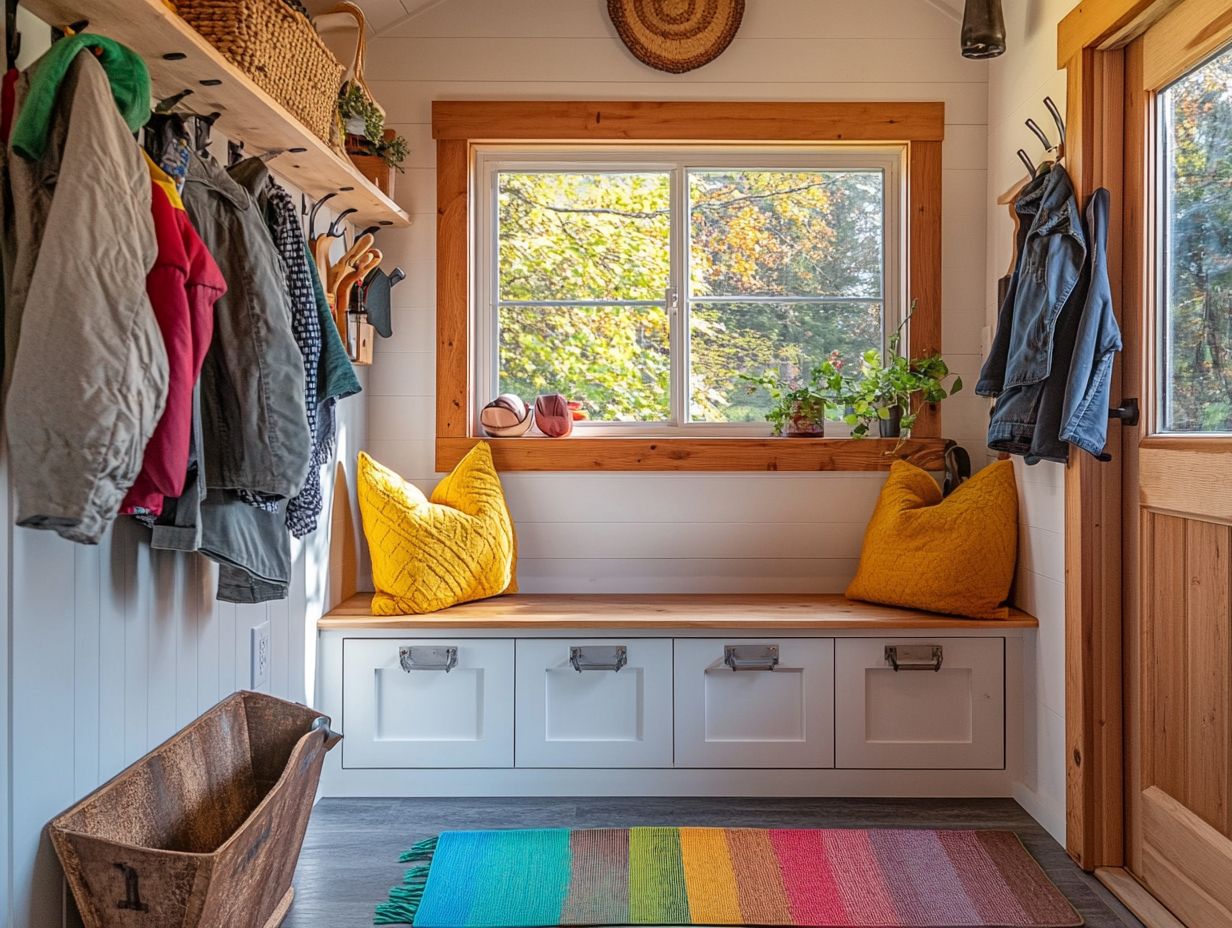
This step-by-step guide simplifies constructing your tiny house mudroom. It covers everything from planning and layout to tile installation, caulk application, and grout filling.
Start with meticulous sub-floor preparation to lay a solid foundation. Then, choose a color palette that fits your style and use matching paint techniques for a cohesive look.
Your attention to detail during tile installation sets the tone for the area. After placing the tiles, apply caulk and fill grout lines for a polished look that withstands moisture.
Incorporate energy-efficient features like motion sensor bulbs for added convenience. These additions will make your mudroom both practical and sustainable.
Maintenance and Upkeep of Tiny House Mudrooms
Regular maintenance is key to keeping your tiny house mudroom functional and attractive. Clean regularly, stay organized, and make occasional updates to avoid clutter.
Smart maintenance strategies will ensure your mudroom remains a charming focal point of your cozy home.
Tips for Keeping Your Mudroom Clean and Functional
Keeping your tiny house mudroom clean and functional demands consistent effort and smart organization techniques. Simple cleaning tips, like using storage baskets for shoes and outerwear, can drastically reduce clutter and streamline the space.
By taking a proactive approach to organization and cleanliness, you can ensure your mudroom remains a functional area that enhances your overall home experience.
To truly maximize the utility of this often-overlooked space, consider adding overhead storage for seasonal items like jackets and boots. This can free up valuable floor space.
Personal touches, such as mudroom decor featuring family photos, not only brighten the area but also create a warm and inviting atmosphere.
Incorporating wall hooks for bags and accessories can further diminish chaos, making it easier for everyone to grab what they need before heading out. With these practical strategies, your tiny house mudroom can transform into both an efficient and aesthetically pleasing part of your home.
Frequently Asked Questions
1. Can I design a mudroom in my tiny house myself?
Yes, you can definitely design a mudroom for your tiny house by yourself. With some creativity and planning, you can create a functional and stylish mudroom that meets your specific needs.
2. What are some important considerations when designing a tiny house mudroom?
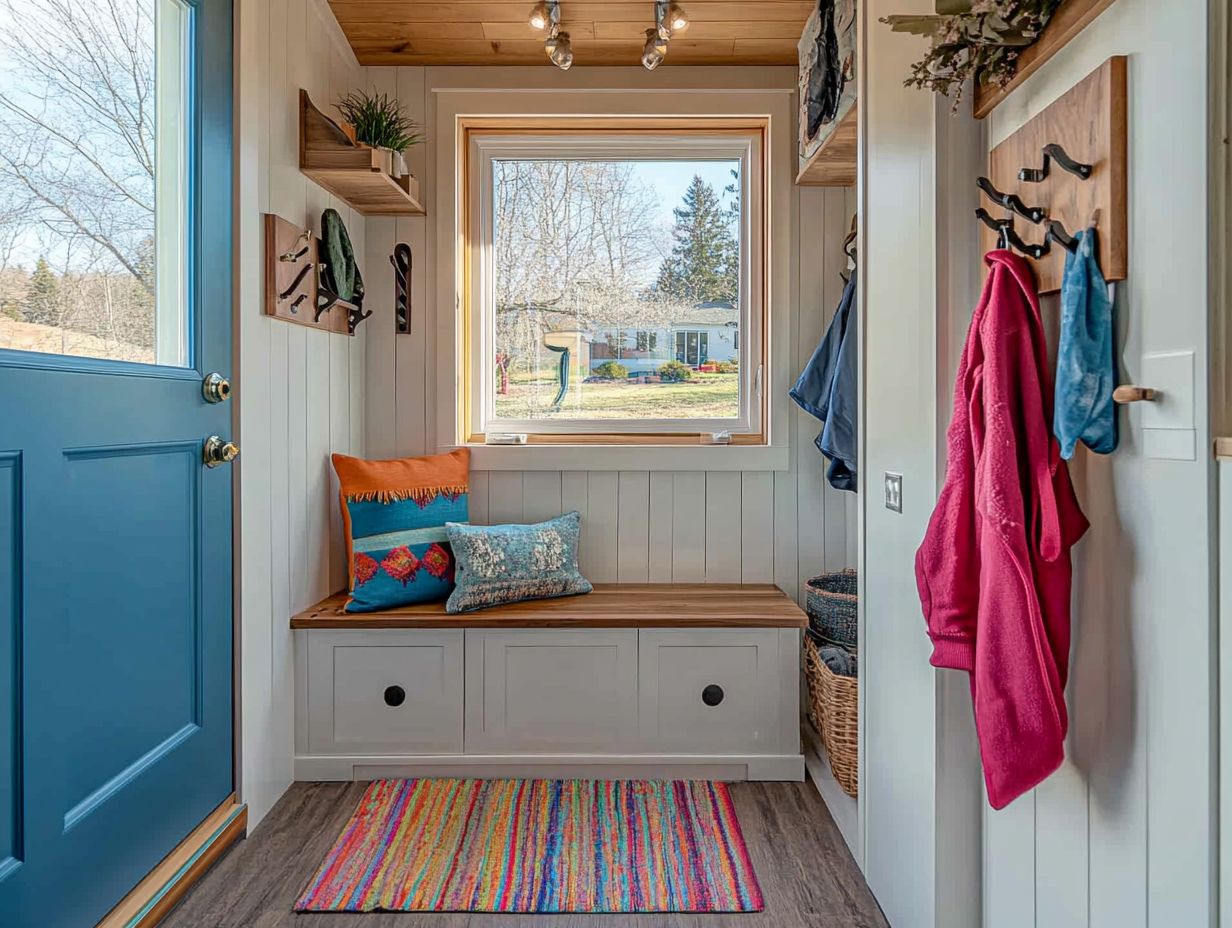
When designing a tiny house mudroom, consider the available space, the purpose of the mudroom, and your storage needs. Think about how the mudroom will connect to the rest of your tiny house.
3. How can I optimize space in my tiny house mudroom?
To optimize space in your tiny house mudroom, use furniture that serves more than one purpose, like a bench with hidden storage. You can also install wall hooks for hanging items or use vertical space by adding shelves or a hanging organizer.
4. Do I need to have a separate room for a mudroom in my tiny house?
No, you don’t necessarily need a separate room for a mudroom in your tiny house. You can designate a small area near the entrance as your mudroom and use creative storage solutions to maximize the space.
5. What are some design ideas for a small mudroom in a tiny house?
Some design ideas for a small mudroom in a tiny house include using a narrow bench with built-in storage, installing a wall-mounted coat rack, using a hanging shoe organizer, and incorporating a mirror for added functionality.
6. How can I add a pop of color or style to my tiny house mudroom?
You can add a pop of color or style to your tiny house mudroom by using colorful hooks or baskets, incorporating a patterned rug, or adding a statement piece of furniture, such as a vintage coat rack or a unique bench.
Get started today to transform your mudroom! Share your own mudroom design ideas or tips in the comments or on social media.

